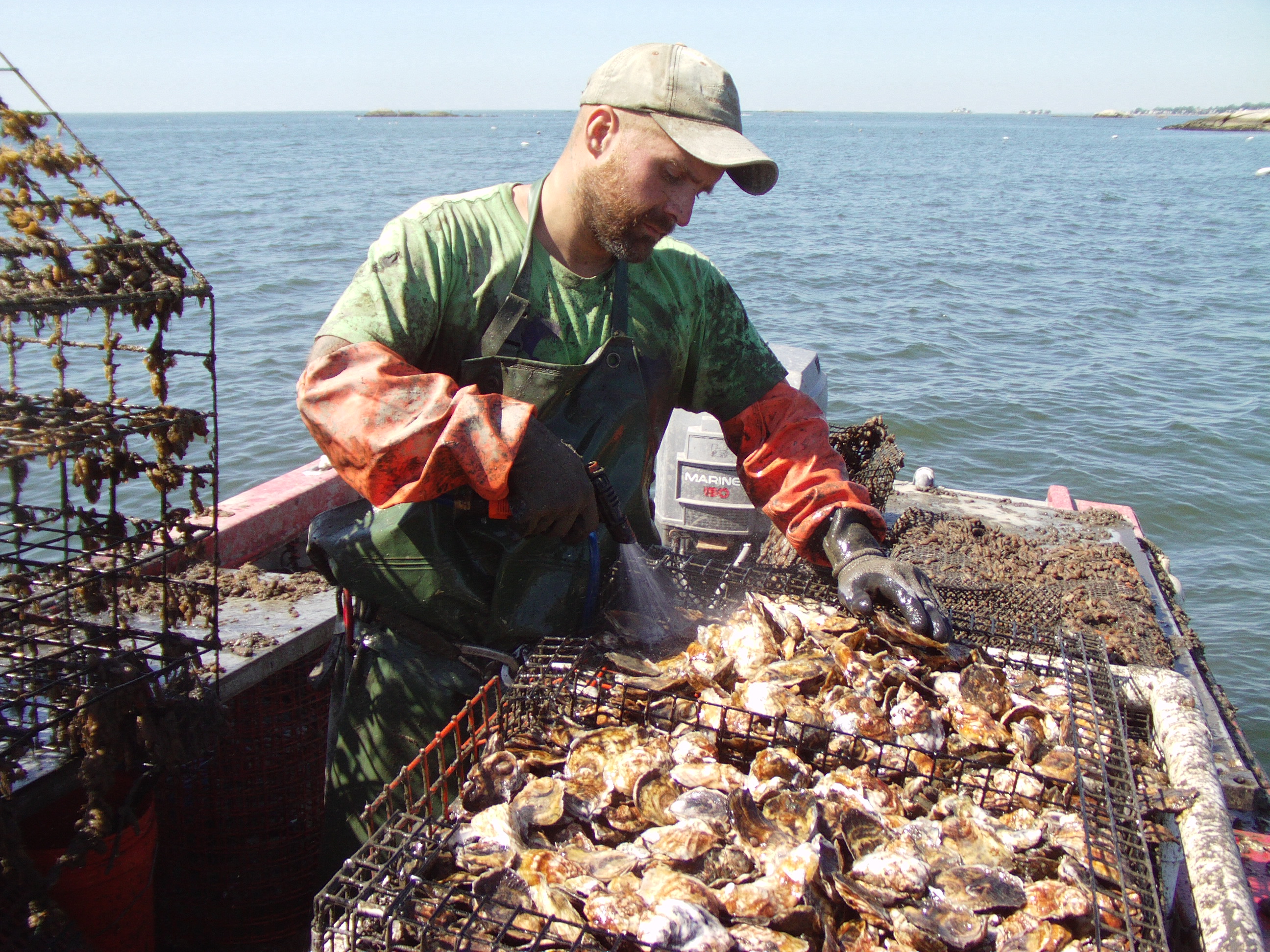You don’t have to own a boat or like eating oysters to care about Connecticut’s shellfish. Bi-valve populations living along the state’s shoreline and in coastal estuaries help create jobs, improve water quality, support research, and bolster the environment – benefits we can all enjoy regardless of where we live or what we eat.

A coalition of shellfish industry professionals, scientists, regulators, and interested citizens has made educating the public about this connection a cornerstone of a multi-year initiative that will officially launch the implementation phase of the project Oct. 20 at a reception at UConn Avery Point.
The first phase of the Connecticut Shellfish Initiative culminated in June with the release of a vision plan that offers a list of recommendations that calls for diversification of the shellfish industry, including moving into other areas of aquaculture; increasing jobs; enhancing shellfish populations; and expanding recreational harvesting opportunities.
“It’s been a consensus-building endeavor,” says Tessa Getchis, an extension educator with UConn Extension and a member of the initiative’s task force committee. “Now we’re at the point where we’re engaging the public in a discussion … to try and figure out the how, what, who, and when of putting the plan into action.”
The plan covers the Connecticut portion of Long Island Sound and its tributaries – a total area of about 335,000 acres — home to such species as Eastern oyster; softshell clams, or steamers, the Bay scallop, and Blue mussels.
Since 2014, the steering committee of the initiative has been mapping out a vision for the future of Connecticut’s shellfish resources. Facilitated by UConn Extension and the Connecticut Sea Grant Extension in collaboration with the National Oceanic and Atmospheric Administration Fisheries, the group looked at opportunities and challenges associated with these resources.
The state Department of Agriculture Agency approached Connecticut Sea Grant – which has a long history of working with the industry – to facilitate the Shellfish Initiative. The Connecticut shellfish harvest pumps about $30 million annually into the state economy, according to agency estimates.
The task force looked at recreational shellfish harvesting as well as commercial shellfishing. They also looked at the growing number of algae farming operations, many of which are now run by former shellfish farmers, says Getchis.
One of the plan’s recommendations is to streamline the permitting process and look at all the statutes related to shell fisheries and aquaculture to help pave the path for growers to transition into new practices and new species.
Public involvement is needed to implement the plan, which is why raising public awareness is so important. Getchis and others have been making the rounds at shellfish festivals to spread the word about the initiative and give hands-on demonstrations on how to go out and dig for shellfish.
“While we’re out there, we’re talking to people about water quality and how, when shellfish feed on phytoplankton and microorganisms, they take in harmful excess nutrients from lawn and farm fertilizer runoff,” Getchis says. “There are great opportunities for us to engage the public, and hopefully that results in more informed decisions. Hopefully that will result in the responsible development of aquaculture, more access to recreational harvesting areas, and acquiring funds for the restoration of shellfish habitats.”
Connecticut’s shellfish initiative is modeled after one spearheaded by NOAA at the national level, the goal of which is to bolster shellfish populations in the nation’s coastal waters through both sustainable commercial production and restoration activities, whether for aquaculture or the environment.
The implementation plan will be organized by committees that will identify actions and details for each recommendation in the vision plan. Short-term goals include no net loss in the next two years of shellfish bed and harvest acreage, shellfish companies, commercial shellfish landings, and recreation permit revenue. Long-term goals, besides creating more jobs and increasing recreational access, include increasing revenue and acreage for harvesting and natural beds.



